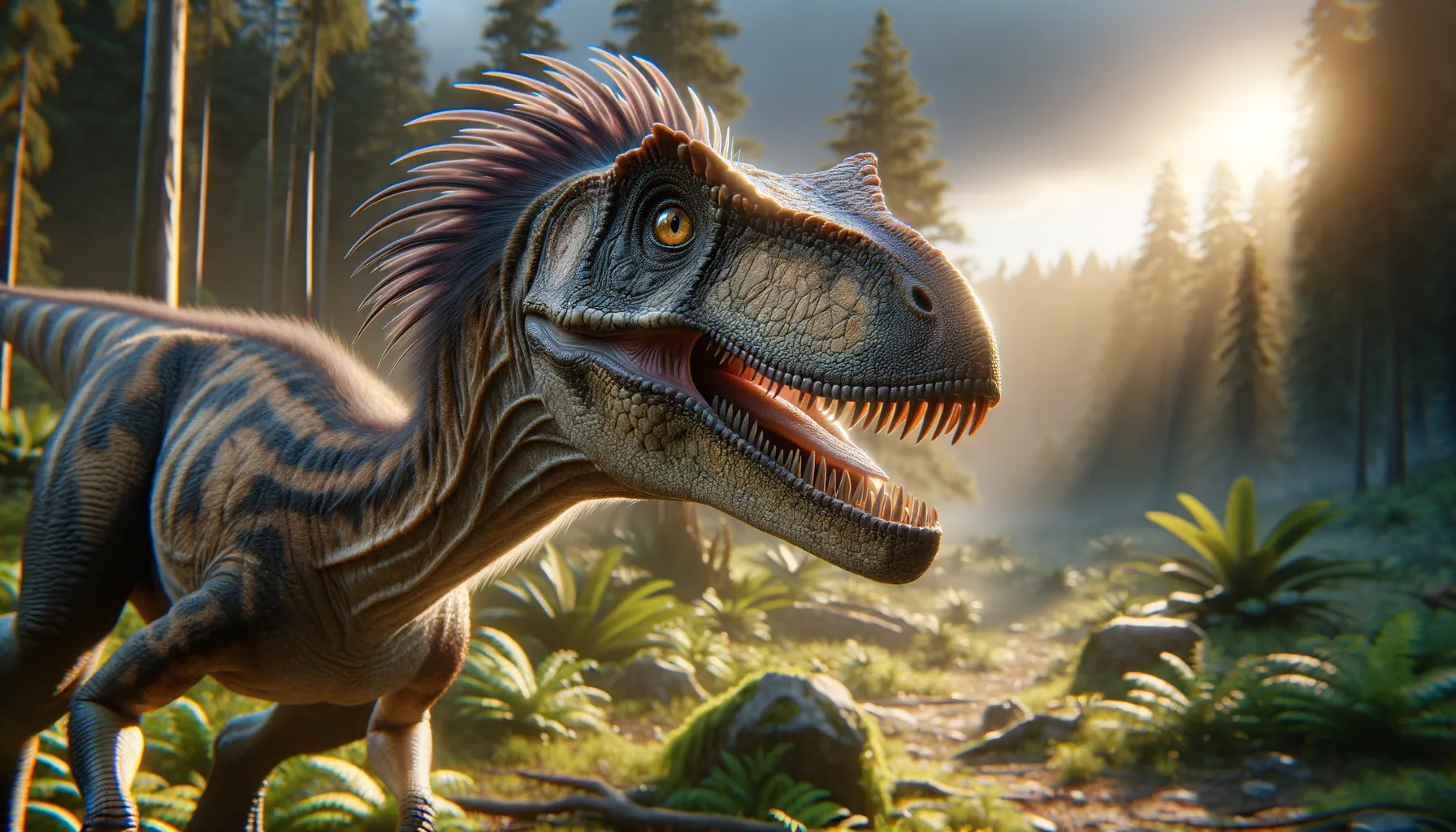
Geminiraptor
Cretaceous runner with unique jaw!
Period
Cretaceous
Length
Roughly 4 meters long.
Height
About 1 meter tall at the hip.
Weight
Approximately 50 kilograms.
The Geminiraptor was a small theropod dinosaur that lived during the Early Cretaceous period. Its name means 'twin thief,' and it was known for having unique features in its jaw and teeth structure that suggest it was well-adapted to a diverse diet. Discovered in North America, it offers insights into the evolution of feathered dinosaurs and their transition into birds.
Diet
Geminiraptor likely had an omnivorous diet, consisting of small animals, insects, and plants. Its varied diet would have allowed it to thrive in different environments, demonstrating its adaptability.
Hunting
As a small theropod, Geminiraptor would have used its speed and agility to chase down small prey. It might have hunted individually or in small groups, employing clever tactics to capture its meals.
Environmental challenges
Geminiraptor faced predators larger than itself, requiring constant vigilance and the use of agility to escape danger. Climate fluctuations could have affected food availability, posing another challenge. Its adaptive diet provided an advantage in surviving these environmental shifts.
Speed
Moderately fast runner for its size.
Lifespan
Estimated to be around 10-20 years.
First discovery
Discovered in Utah, USA, in 2010.
Fun Facts
- Geminiraptor was a small dinosaur that lived around 130 million years ago during the Early Cretaceous period.
- The name 'Geminiraptor' means 'twin thief,' named for its two prominent crests on its head.
- Fossils of Geminiraptor were discovered in what is now Utah, USA, in the Cedar Mountain Formation.
- Geminiraptor belonged to a group of dinosaurs known as dromaeosaurids, which were closely related to birds.
- Despite its fierce name, Geminiraptor was likely covered in feathers and might have looked like a bird.
- Geminiraptor was a carnivorous dinosaur, using its sharp teeth and claws to hunt small prey.
- This dinosaur is thought to have been lightweight and agile, perfect for quick movements while hunting.
Growth and Development
Geminiraptor's growth rates likely varied based on resource availability, with faster growth in nutrient-rich environments. Juveniles would have been vulnerable to predators, growing into agile adults capable of defending themselves. Fossil evidence suggests rapid development during early life stages.
Habitat
Geminiraptor inhabited semi-arid regions with some forested areas, providing both cover and open spaces for hunting. Rivers and streams in its habitat offered a water source and attracted various prey species. The landscape was diverse, supporting a wide range of flora and fauna.
Interaction with other species
Geminiraptor would have competed with other small theropods and carnivorous species for food resources. It may have avoided large predators by using dense vegetation and rocky terrain. Symbiotic relationships with some species could have existed, benefiting primarily from shared environmental resources.
Natural lifespan
Geminiraptor likely lived 10 to 20 years in the wild.
Reproduction
Geminiraptor, like other theropods, likely laid eggs in nests carefully prepared in hidden areas to protect from predators. Clutch sizes were probably small, ensuring better parental investment in each offspring. Parental care might have included guarding nests and teaching juvenile survival skills.
Social behaviour
While generally believed to be solitary or to hunt in small groups, Geminiraptor might have exhibited some social behavior during mating or in resource-rich areas. Social interactions could have included communication through vocalizations and visual displays aided by feather-like structures.
Fossil locations
Fossils have been found primarily in Utah, improving the understanding of theropod distribution in North America during the Early Cretaceous. These finds provide crucial insights into the evolutionary pathways of small theropods towards avian characteristics.
